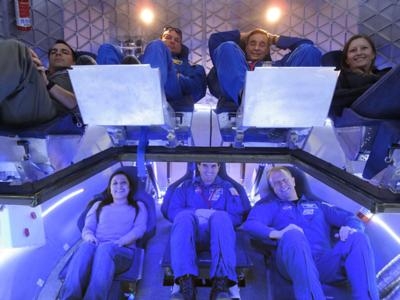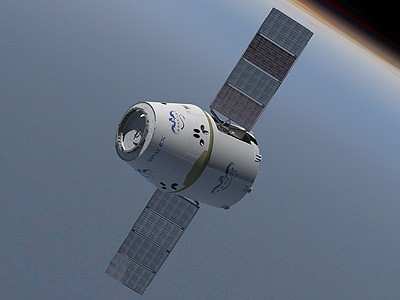Wed, May 09, 2012
Layout Will Allow Astronauts To Move Effectively Within The Vehicle
SpaceX has finished an important evaluation of a prototype Dragon spacecraft designed to carry people into orbit. This key milestone is part of SpaceX's partnership with NASA under a funded Space Act Agreement to advance the design of crew transportation vehicles. The primary goal of the tests was to determine whether the layout will allow astronauts to maneuver effectively in the vehicle. Several veteran space shuttle astronauts and NASA engineers conducted the evaluation during a pair of two-day-long reviews.

"I am very pleased with the progress SpaceX and our other commercial partners are making during the CCDev2 effort," said NASA Commercial Spaceflight Director Philip McAlister. "Together with NASA's development of beyond low-Earth orbit systems, commercial crew and cargo transportation is an integral part of our overall human spaceflight program."
As part of the Commercial Crew Development Round 2, or CCDev2, agreement, the company invited the astronauts and engineers to its headquarters in Hawthorne, Calif., to conduct the evaluation. The prototype was equipped with seats, lighting, environmental control and life support systems, conceptual displays and controls, cargo racks and other interior systems. "This milestone demonstrated the layout of the crew cabin supports critical tasks," said SpaceX Commercial Crew Development Manager Garrett Reisman. "It also demonstrated the Dragon interior has been designed to maximize the ability of the seven-member crew to do their job as effectively as possible."

During the reviews, space shuttle veterans Rex Walheim, Tony Antonelli, Eric Boe and Tim Kopra participated in so-called "human factor assessments." This included entering and exiting Dragon under normal and emergency scenarios. They also performed reach and visibility evaluations. "As an anchor customer for commercial transportation services, we are happy to provide SpaceX with knowledge and lessons learned from our 50 years of human spaceflight," said Commercial Crew Program Manager Ed Mango. "We appreciate the opportunity SpaceX gave us to provide feedback on these critical interior systems while the company maintains its flexibility to appeal to other customers."
This is the seventh of 10 milestones SpaceX must meet under the CCDev2 agreement, which continues through July 31. This includes the development of a launch abort system for crew escape during launch or ascent. All of NASA's industry partners continue to meet their established milestones in developing safe, reliable and affordable commercial crew transportation capabilities. (Images courtesy SpaceX)
More News
Terminal Radar Service Area Airspace surrounding designated airports wherein ATC provides radar vectoring, sequencing, and separation on a full-time basis for all IFR and participa>[...]
Aero Linx: Utah Back Country Pilots Association (UBCP) Through the sharing experiences, the UBCP has built upon a foundation of safe operating practices in some of the most challen>[...]
From 2010 (YouTube Edition): Imagine... Be The Change... Inspire FROM 2010: One of the more unusual phone calls I have ever received occurred a few years ago... from Anousheh Ansar>[...]
(Pilot) Felt A Shudder And Heard The Engine Sounding Differently, Followed By The Engine Chip Detector Light On April 14, 2025, about 1800 Pacific daylight time, a Bell 206B, N1667>[...]
Also: AMA Names Tyler Dobbs, More Falcon 9 Ops, Firefly Launch Unsuccessful, Autonomous F-16s The Air Force has begun ground testing a future uncrewed jet design in a milestone tow>[...]
 ANN's Daily Aero-Term (05.07.25): Terminal Radar Service Area
ANN's Daily Aero-Term (05.07.25): Terminal Radar Service Area ANN's Daily Aero-Linx (05.07.25)
ANN's Daily Aero-Linx (05.07.25) Classic Aero-TV: Anousheh Ansari -- The Woman Behind The Prize
Classic Aero-TV: Anousheh Ansari -- The Woman Behind The Prize NTSB Prelim: Bell 206B
NTSB Prelim: Bell 206B Airborne-NextGen 05.06.25: AF Uncrewed Fighters, Drones v Planes, Joby Crew Test
Airborne-NextGen 05.06.25: AF Uncrewed Fighters, Drones v Planes, Joby Crew Test




